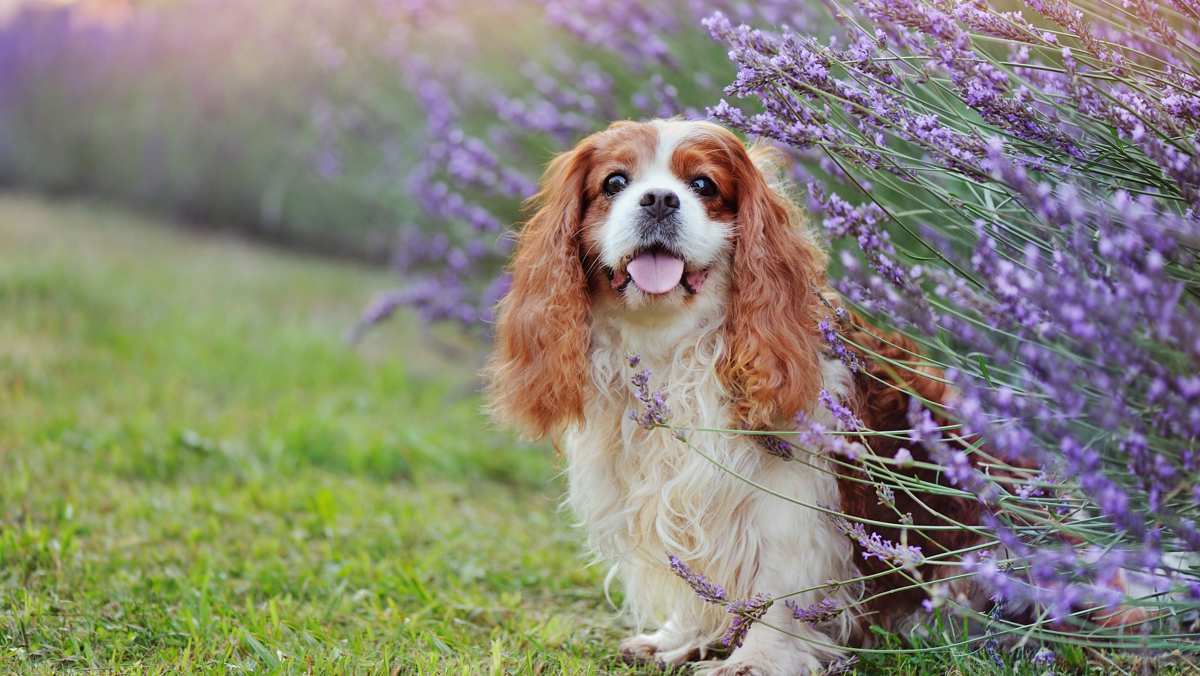The King Charles Spaniel (affectionately called a "Charlie") should not be confused with the closely named Cavalier King Charles Spaniel — although the latter breed was originally called just "King Charles Spaniel" minus the "Cavalier".
Of course, there were a number of toy spaniel predecessors to the King Charles Spaniel, and their cumulative history is recorded as far back as the 16th century in paintings by Titian and Eworth. Prior to that, accounts differ on whether these spaniels were present in Europe as early as the 11th century (as hunting dogs, which they certainly were in later centuries), or if they were not introduced to the West (from the East, and in particular from Japan) until the 13th century. In any case, the toy spaniels became favored by royalty and were for the elite used as lapdogs, bed warmers and palace regulars; by the 17th century, they had fallen out of fashion as they were essentially replaced by pugs. Their place in the palace was regained in the 18th century, and by the 19th century they were being crossbred with Oriental pugs — which can be observed in the Charlie's face and especially in the nose.
The King Charles Spaniel was greatly admired by Mary, Queen of Scots, and when she was beheaded on February 8, 1587, legend has it that a small black and white toy spaniel accompanied her even at the time of her death. The King Charles Spaniel (which would later become the Cavalier King Charles Spaniel) was named after a 17th century English king, Charles I. Before his death, however, the king's love for the breed we now know as the Cavalier King Charles Spaniel was used in the naming process by the very subjects who would eventually mistrust him. It is claimed he, too, was accompanied by his beloved King Charles Spaniel when he was escorted to the guillotine. The subsequent monarch, King Charles II, was also fond of this spaniel and was never in public without a few of them from his pack; two or three followed him everywhere. His love for the breed was such that he authored a decree allowing the King Charles Spaniel to go anywhere, a decree that remains observed in England to this day. As Charles II was known as the "Cavalier King," so too did the prefix become an official part of the breed's name nearly three centuries later in 1928: Cavalier King Charles Spaniel. The "Cavalier" was added to distinguish between the earlier, long-nosed and flat-headed breed and the King Charles Spaniel variety of the English Toy Spaniel breed with the domed head, short snout and petite body.
During the last two centuries, the Pug cross-breeding significantly altered this particular Spaniel into what we currently call the King Charles Spaniel. (In the early 20th century, efforts were undertaken to find examples of the long-nosed, flat-headed, somewhat larger-bodied version that had been recorded in 17th century paintings. Although it took more than two decades and much work via the Crufts (the world's oldest, largest and most renowned dog show), considerable monetary awards and the Kennel Club finally recognizing it apart from the King Charles Spaniel — in 1945 — the Cavalier King Charles Spaniel eventually came into its own.)
The American Kennel Club (AKC) recognized the King Charles Spaniel in 1886; the breed is also recognized by the UK-based Kennel Club.

